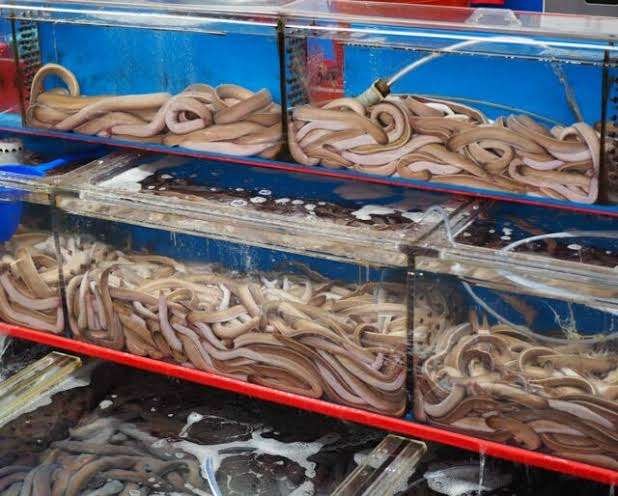Hagfish Day – October 19, 2022, history, significance
Hagfish Day is observed on the third Wednesday in October every year, falling on October 19 this year. It is a day to celebrate the existence and importance of the hagfish — the squiggly, slimy fish species. Although it is often considered the ugliest fish species, it plays a vital role in the overall ecosystem and equilibrium within marine life.
HISTORY OF HAGFISH DAY

Alright, we cannot deny the obvious — hagfish bring with them a whole other level of slime and ick. With no jaw, no bones, and no scales, this fish species is not the easiest on the eyes. To make matters worse, they have equally unsettling eating habits. Hagfish feast on dead or dying bodies of marine animals. They do so by sliding into the said body and eating it away from the inside, just leaving the skin behind.
That being said, as unappealing as this species might be, it is also essential to maintain a balanced ecosystem. Whether it is outwardly obvious or not, each organism in nature has a role to play in order to keep the world functioning as it should.
All creatures, no matter how big or small, are important and their absence can create undesirable circumstances. In the case of the hagfish, they are important to ensure the timely removal of dead marine animals and recycling of nutrients and carbon. Without them, the ocean floor would overflow with carcasses, in turn, creating an unsanitary environment for the remaining marine animals.
Once you look past their exterior, hagfish have a lot to offer and deserve to be celebrated. For this reason, WhaleTimes founded Hagfish Day in 2009 and it has been observed nationwide on the third Wednesday of October ever since.
HAGFISH DAY TIMELINE
300 Million Years Ago
Existence of Hagfish
The first hagfish fossil is dated back 300 million years.
100 Million Years Ago
Hagfish Family Tree
A fossil from 100 million years ago places hagfish in the vertebrate category.
2011
Hagfish Become Endangered
The IUCN Red List of Threatened Species determines that 20% of hagfish species run the risk of becoming extinct.
2009
Protect the Hagfish
WhaleTimes launches Hagfish Day in order to celebrate and protect them.
HAGFISH DAY ACTIVITIES
Educate yourself
Hagfish have numerous positive characteristics and each of their features comes with a purpose. Take the day to educate yourself and others on why they are important.
Go to an aquarium
Visit your local aquarium and learn more about marine life and its diversity and functioning. Even try to place the hagfish in the scene and picture what the ocean would be like without them.
Donate to an organization
Donate to organizations that work toward protecting marine life and endangered species. You could also volunteer and donate your time if presented with the opportunity.
5 COOL FACTS ABOUT HAGFISH
They were born perfect
Fossils show that hagfish have had little to no change over the years and came into existence with the capability to survive modern times.
They have sharp senses
With simple eyespots for eyes, hagfish rely on their smell and touch to navigate and find food.
Slimy with a purpose
In threatening situations, hagfish produce slime to ward off predators (sometimes even five gallons of it within minutes).
They even benefit humans
Their slime contains extremely strong threads of protein and can be used to make durable material for bulletproof vests, artificial tissue e.t.c.
They have four hearts
We don’t know about you but this fact low-key makes us see them in a new, cuter light.
WHY WE LOVE HAGFISH DAY
It reminds us that there’s beauty in everything
From a young age, we have been taught not to judge a book by its cover. However unpleasant the hagfish’s exterior might be, it truly is a fascinating part of our ecosystem.
It highlights that everyone matters
Each organism has an important role to play in the world, much like the hagfish. We don’t have to like all living creatures, but we can try to understand and appreciate their purpose.
It directs our focus to bigger problems
In the case of hagfish, awareness is generated about the critical endangering and depletion of marine life, all thanks to rapidly increasing overfishing.



